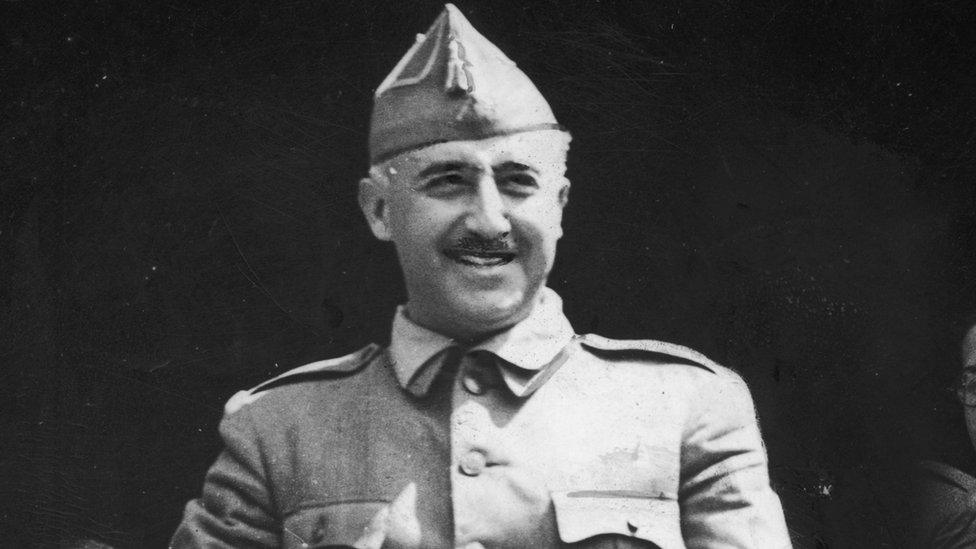Spain paves way to remove Franco remains from mausoleum
- Published
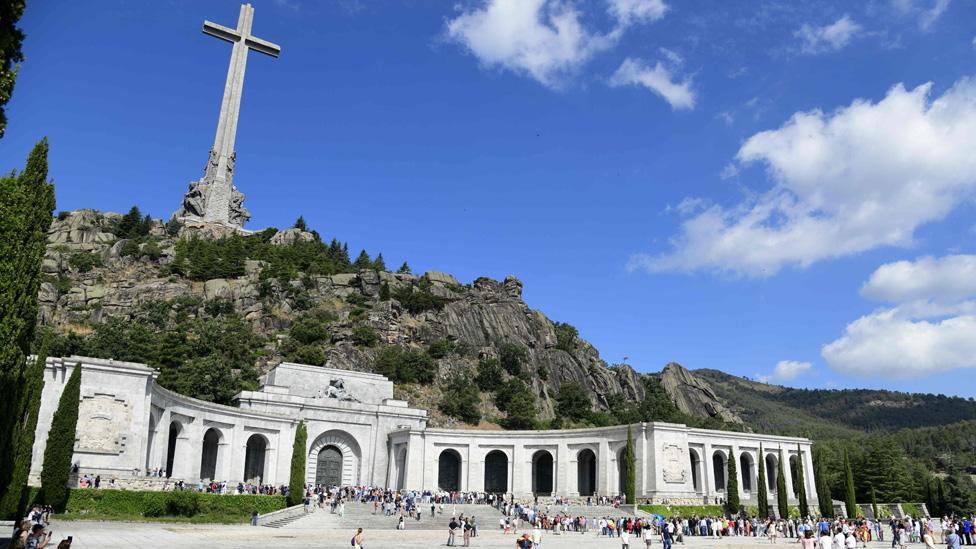
The Valley of the Fallen is a politically controversial site
Spain's socialist government has passed a decree to exhume the remains of the late fascist dictator Francisco Franco from a huge mausoleum near Madrid.
The Valley of the Fallen, 50km (30 miles) from Madrid, was created by the dictator, who died in 1975.
Today the site is seen as glorifying his victory in the 1936-39 Civil War.
Gen Franco's family opposes the reburial plan. It is not clear where the remains will go, but the decree is expected to be approved by parliament.
The Valley of the Fallen is also the resting place of about 37,000 dead from the civil war - soldiers from both sides.
Far-right supporters of Franco pay homage to him at the site.
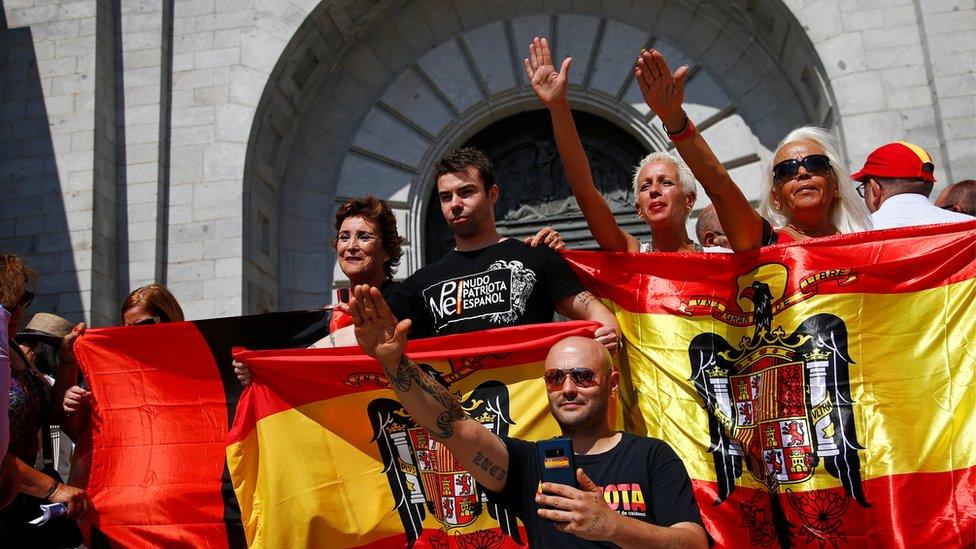
Franco's tomb is a pilgrimage site for Spanish fascists today
But it is loathed by many in Spain as a monument to the triumph of fascism. Left-wing Republican prisoners were forced to help build it.
Read more on Franco's legacy:
Spain's socialist government, in power since June, has made removing Franco's remains a priority. It sees their presence there as an affront to a mature democracy.
If the Franco family does not specify where the remains are to go, the final resting place will be decided by the government.
The Socialist Party has parliamentary support for the exhumation from the left-wing Podemos party and from Catalan and Basque nationalists.

Francisco Franco, 1892-1975
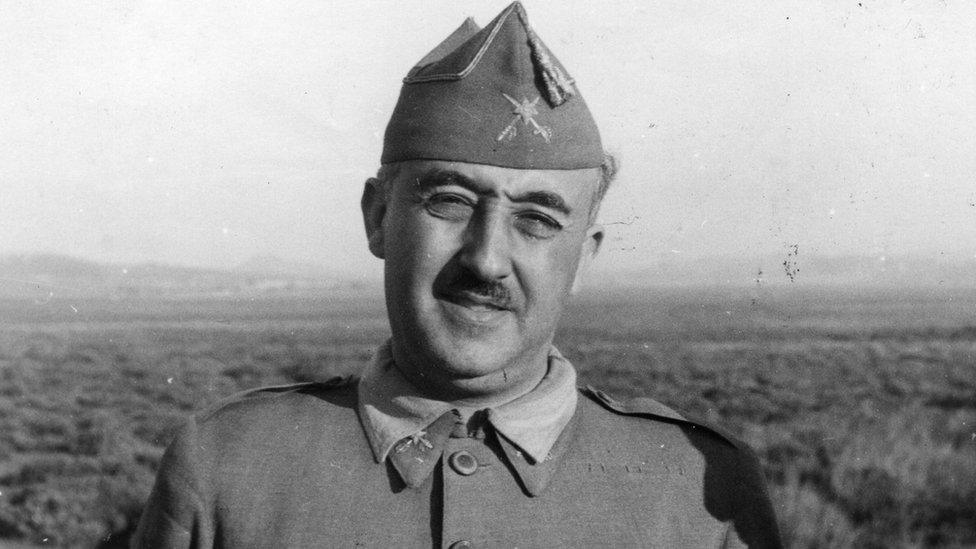
Born in Galicia to a military family, became the youngest general in Spain in the 1920s
Following the election of the leftist Popular Front in 1936, Franco and other generals launched a revolt, which sparked the three-year civil war
Helped by Nazi Germany and Mussolini's Italy, Franco won the war in 1939 and established a dictatorship, proclaiming himself head of state - "El Caudillo"
Franco kept a tight grip on power until his death in 1975, after which Spain made a transition to democracy

Will the Valley of the Fallen remain a fascist symbol?
That is not what the government wants; the plan is to make it "a place of commemoration, remembrance and homage to the victims of the war".
But Deputy Prime Minister Carmen Calvo said the tomb of Primo de Rivera, founder of Franco's nationalist Falange movement, would remain undisturbed there. She described de Rivera as one of the civil war's victims. His tomb is opposite Franco's.
De Rivera was shot by a Republican firing squad in 1936.
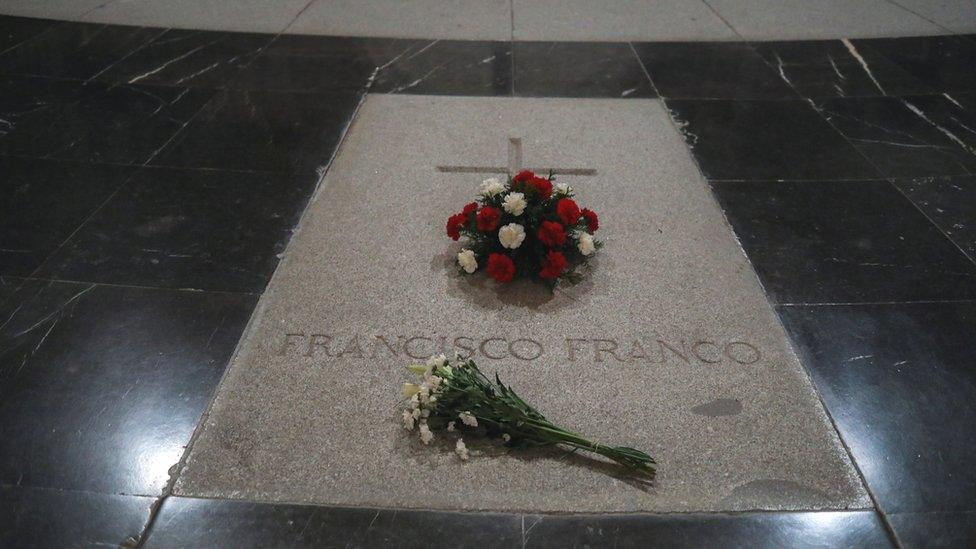
Franco's tomb is in a basilica run by Benedictine monks
Is Spain still haunted by the Franco era?
Democracy is well established now, but the Franco era does still haunt Spain. There was an unwritten "pact of forgetting" during the democratic transition.
An Amnesty Law adopted in 1977 prevents any criminal investigation into the Franco years.
Statues of Franco were removed and many streets were renamed, to erase obvious signs of the fascist past.
A Historical Memory Law, passed in 2007 by the socialist government at the time, recognised the war victims on both sides and provided some help for surviving victims of Franco's dictatorship and their families.
But the work to locate and rebury thousands of civil war dead has been slow and controversial.
- Published15 July 2018
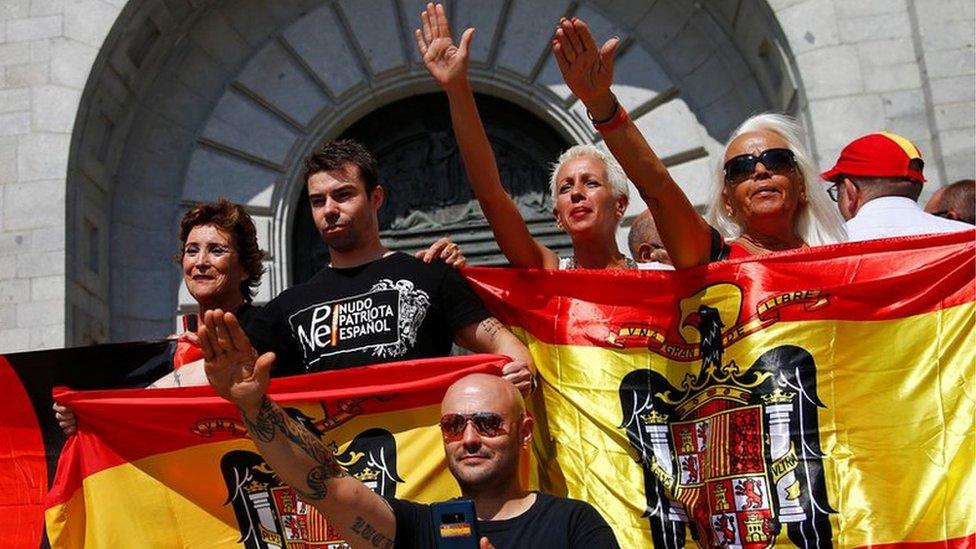
- Published12 March 2018
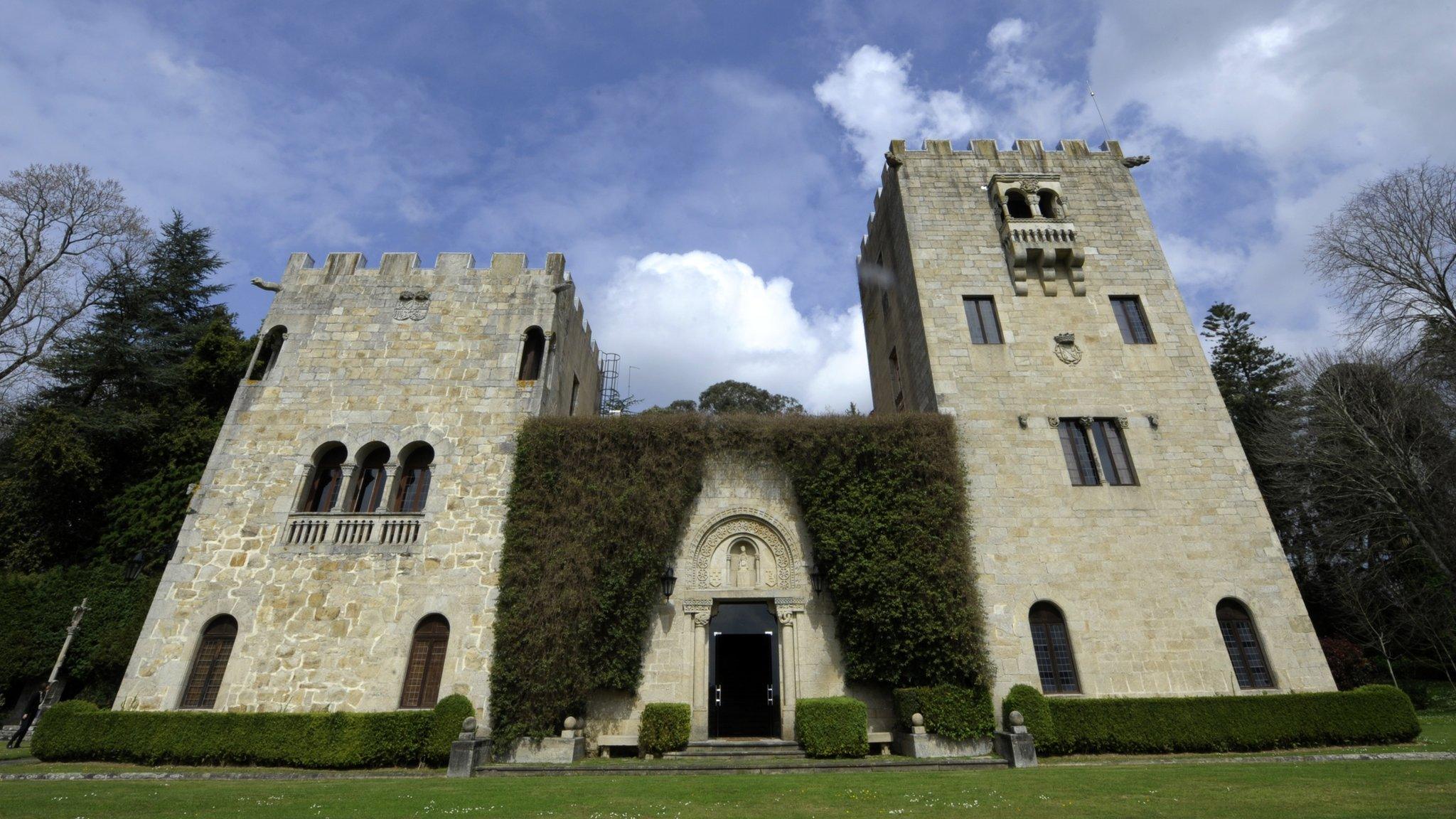
- Published12 February 2016

- Published20 November 2015
